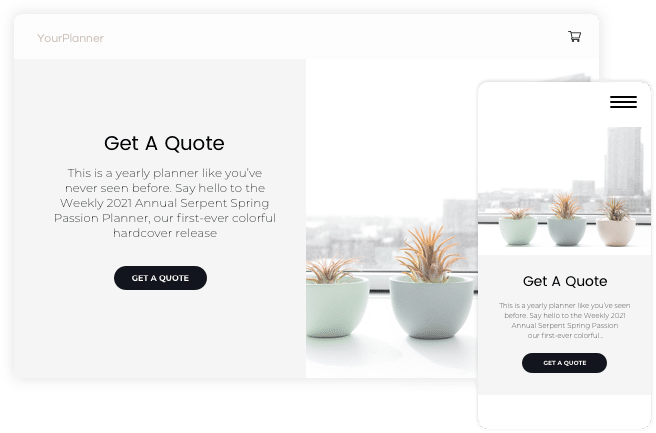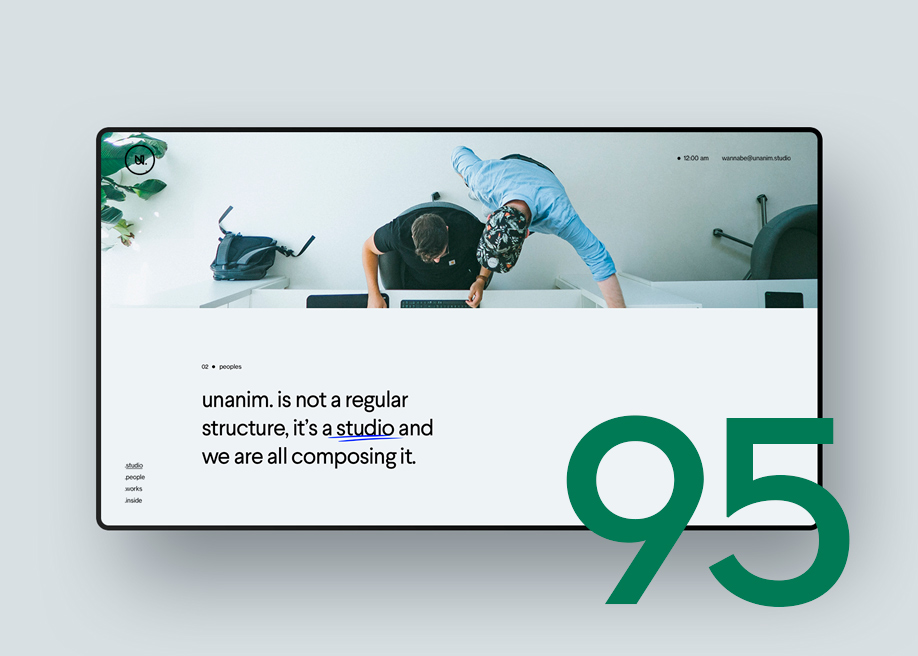Your Digital Success Starts Right Here: Trusted Website Design Agency at Your Service
Explore the Different Kinds Of Website Design Provider for Your One-of-a-kind Needs
From receptive web style that adapts to various tools, to shopping web style that drives on-line sales, to individual experience (UX) style that enhances customer fulfillment, to custom-made web style that brings your vision to life-- the opportunities are limitless. Whether you're a tiny service proprietor looking to develop an on the internet presence or a business owner aiming to transform the mobile app globe, this conversation will drop light on the different types of web design solutions offered, aiding you make an educated choice that straightens with your goals.
Receptive Website Design
Responsive web layout is an essential aspect of modern-day internet growth that makes sure websites adapt and display seamlessly throughout various tools and display sizes. With the increasing use smartphones, tablets, and other mobile tools, it has become crucial for sites to be easily accessible and straightforward on any type of screen.
Receptive website design utilizes a mix of flexible grids, formats, pictures, and CSS media questions to achieve this adaptability. It allows the internet site to automatically adjust its design and content based on the tool's screen orientation, size, and resolution (website design agency). This means that users can access the site on their desktop computer computers, laptop computers, tablet computers, or smartphones without encountering any type of issues or needing to zoom in or bent on view the content properly

Shopping Website Design

With the boosting demand for on-line purchasing, services are now focusing on e-commerce web layout to create visually attractive and user-friendly websites that drive sales and enhance the customer buying experience. E-commerce web style includes various aspects such as design, navigation, item display screen, and checkout process optimization. These components are essential for bring in and retaining clients, as well as raising conversion rates.
An efficient e-commerce website design starts with an efficient layout that permits customers to easily locate the items or solutions they are searching for. Clear and user-friendly navigation food selections, search bars, and filtering alternatives are essential for a smooth surfing experience. Furthermore, the product display screen ought to display top notch pictures, comprehensive descriptions, and customer reviews to construct depend on and self-confidence in the product.
Furthermore, the check out process need to be optimized for simpleness and benefit. A safe and secure and structured payment entrance, in addition to multiple repayment options, ensures a smooth transaction for the customer. In addition, including features such as visitor checkout, order monitoring, and personalized referrals can improve the total purchasing experience.
Customer Experience (UX) Style
Customer Experience (UX) Design plays an essential duty in developing appealing and easy to use web sites that prioritize the needs and choices of the target audience. It involves developing and enhancing the general experience that individuals have when communicating with a website or application. UX developers aim to boost customer satisfaction by improving the functionality, accessibility, and performance of the web site.

UX developers focus on developing intuitive navigating, concise and clear web content, and aesthetically appealing interfaces. They guarantee that the internet site is very easy to comprehend and browse, ensuring a delightful and seamless individual experience.
Along with enhancing functionality, UX design also considers the emotional facet of individual experience. Designers intend to stimulate favorable emotions via aesthetic elements, such as shades, typography, and imagery, which add to the total user contentment.
Custom Website Design
Custom website design involves producing distinct and tailor-made web sites that are particularly developed to fulfill the individual demands and requirements of a company or organization. Unlike pre-designed themes or common site styles, custom-made web layout supplies an individualized strategy that mirrors the brand identification, worths, and goals of the client.
With custom website design, every element of the web site is thoroughly crafted to line up with the customer's goals. This consists of the format, color design, typography, photos, and overall individual experience. The layout procedure starts with an extensive understanding of the customer's service and target market, enabling the internet designer to develop a web site that effectively communicates the customer's message and engages users.
Among the crucial advantages of custom website design is its adaptability. As the website is built from square one, the internet developer has complete control over its functionality and functions. This makes it possible for the assimilation of any wanted customizations, click here now such as ecommerce functionality, web content administration systems, or interactive components.
In addition, customized website design makes certain that the site is maximized for online search engine, making it much more noticeable to prospective consumers. By carrying out SEO finest methods, such as correct keyword placement and meta tags, the web site can attain higher positions in search engine results.
Mobile App Style
Mobile application design involves developing user-friendly and aesthetically appealing user interfaces for applications that are specifically designed for mobile phones. With the boosting popularity of tablets and mobile phones, mobile app design has become a crucial facet of digital item advancement.

Aesthetic charm is additionally important in mobile app design. Using colors, typography, and imagery can create an aesthetically pleasing interface that catches the individual's interest and improves their overall Check Out Your URL experience. Furthermore, integrating brand elements and keeping consistency with the organization's visual identification can aid establish a strong brand existence within the application.
Mobile application layout also includes thinking about various technical elements, such as gadget performance, compatibility, and responsiveness optimization - website design agency. It is crucial to ensure that the app operates perfectly across various gadgets and running systems, providing a consistent experience to all users
Conclusion
Receptive internet style ensures a seamless experience across different devices, while ecommerce web layout focuses on developing on-line shopping platforms. Custom-made web style offers tailored options to meet details requirements, while mobile application design focuses on producing user-friendly mobile applications.
From receptive internet design that adapts to various gadgets, to ecommerce web layout that drives on-line sales, to customer experience (UX) design that improves consumer complete satisfaction, to custom web layout that brings your vision to life-- the possibilities are limitless.An efficient ecommerce web layout starts with a well-organized design that permits individuals to quickly locate the items or solutions they are looking for. The layout procedure begins with an extensive understanding of the customer's business and target audience, enabling the internet designer to develop a website that efficiently communicates the client's message and involves customers.
Receptive web style makes certain a smooth experience throughout various gadgets, while shopping internet design focuses on producing on-line buying platforms. Customized internet style provides customized solutions to fulfill details demands, while mobile application layout focuses on creating straightforward mobile applications.